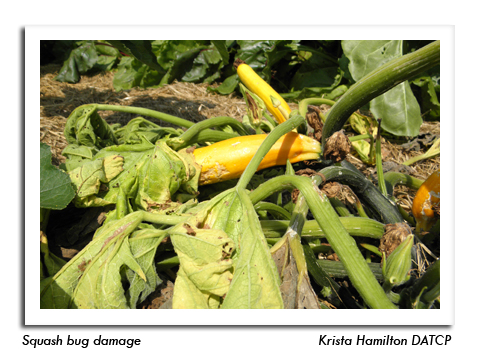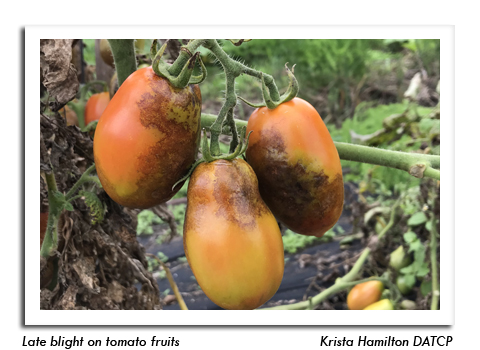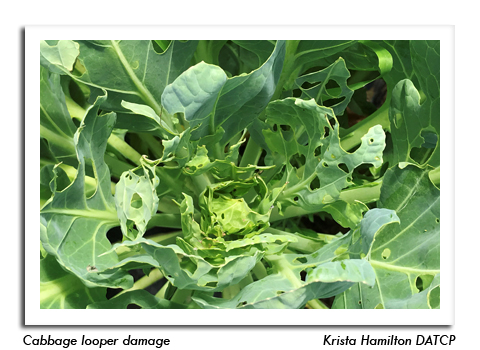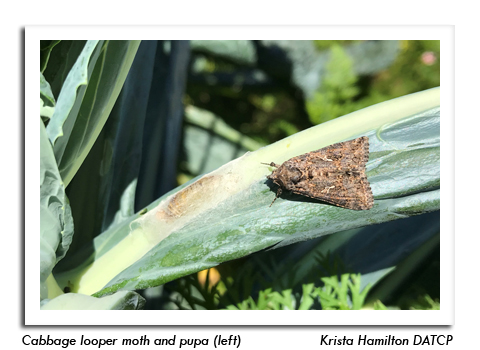
 |
|
|
Vegetables
Volume 65 Number 14 Date 08/06/2020 SQUASH BUG - All stages of this pest were observed this week on melons, pumpkins and squash in several community gardens. Most cucurbit crops have matured beyond the critical period of control (seedling and flowering stages), but squash bug feeding will persist through fall, causing aesthetic damage and, in extreme cases, killing plants. Disposing of all cucurbit foliage and plant debris around the garden will eliminate overwintering sites and help reduce next year's population. ONION MAGGOT - Emergence of late-summer flies is expected to begin soon in advanced southern Wisconsin locations, following the accumulation of 3,230 degree days (base 40°F). Larvae from this third and final generation will overwinter in cull onions or bulbs left behind in fields. Thorough fall clean-up and rotating to a non-crop host are recommended if onion maggot problems occurred this season. Onion maggot degree days as of August 5 were: Beloit 3,113, Madison 3,040, Eau Claire 2,987, Green Bay 2,746, and Hancock 2,690. LATE BLIGHT - Regular monitoring of plants for signs of infection and regular treatment of fields on a five- to seven-day schedule is advised in order to prevent this disease from developing in tomato and potato crops as harvest accelerates. No cases of late blight have been confirmed in any Wisconsin potato field or home garden this season, but all potato growing areas in the state have exceeded the threshold for late blight management and fungicidal protection of susceptible tomato and potato crops is recommended by UW at this time. CABBAGE LOOPER - Scouting should continue through early September. A 10% infestation rate is the suggested treatment threshold from early heading until harvest to protect the market quality of cabbage. The same threshold applies to broccoli and cauliflower once flowers or curds begin to develop. Larval damage to cole crops appears to be less common this season compared to 2019. -- Krista Hamilton, DATCP Entomologist .jpg)





|
|
|